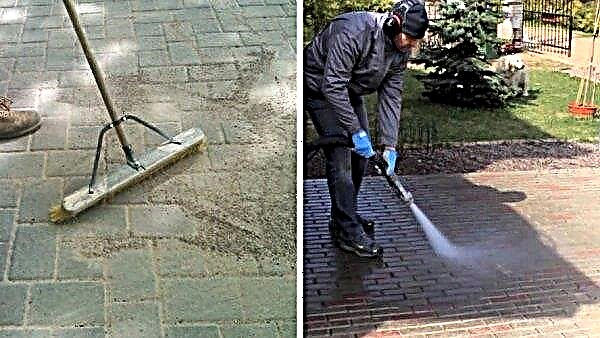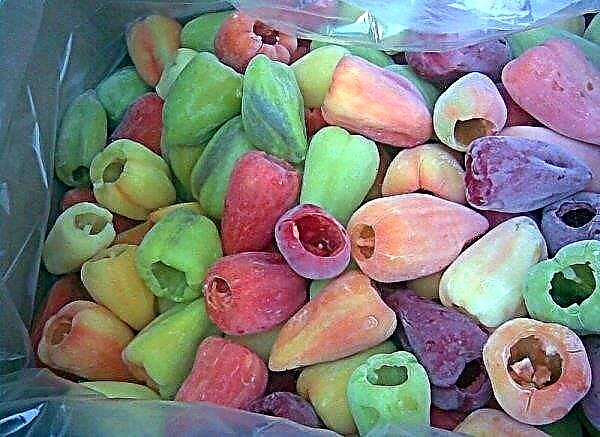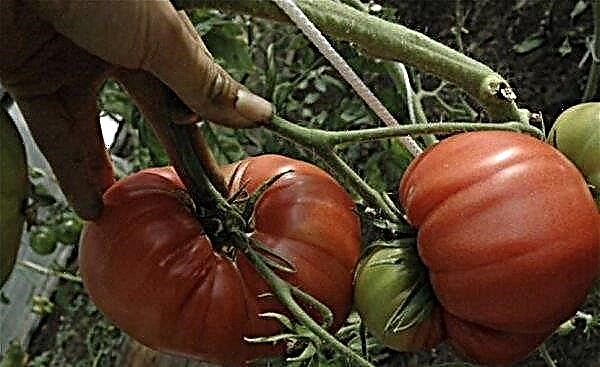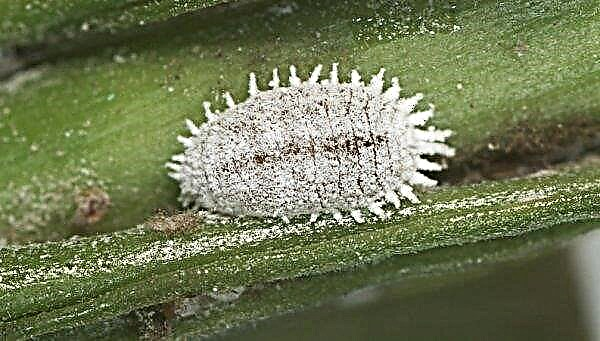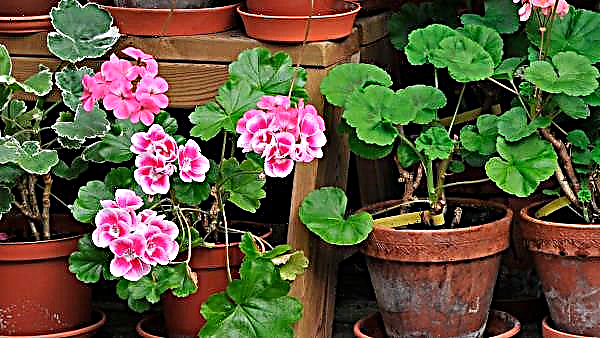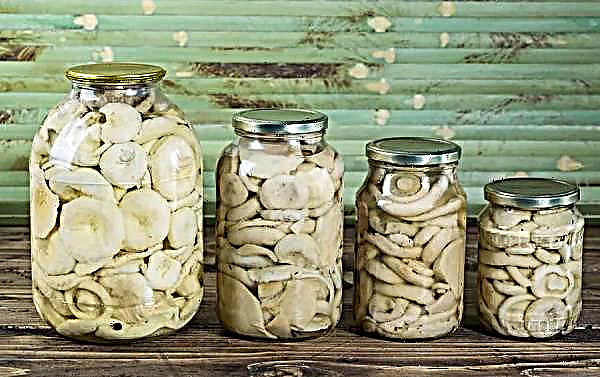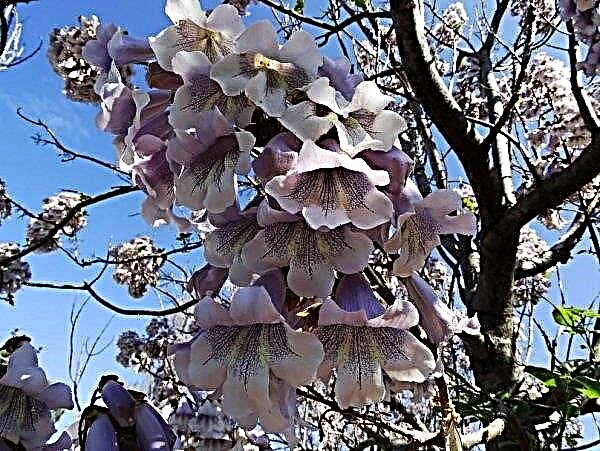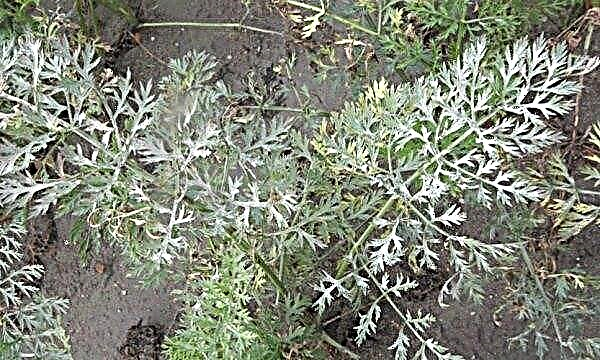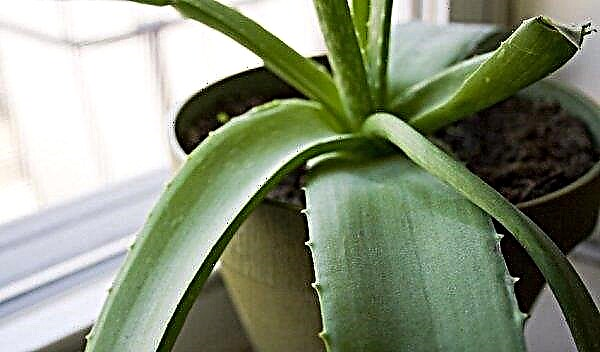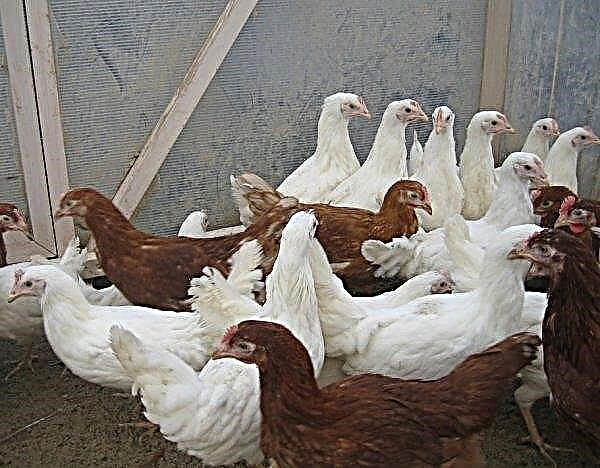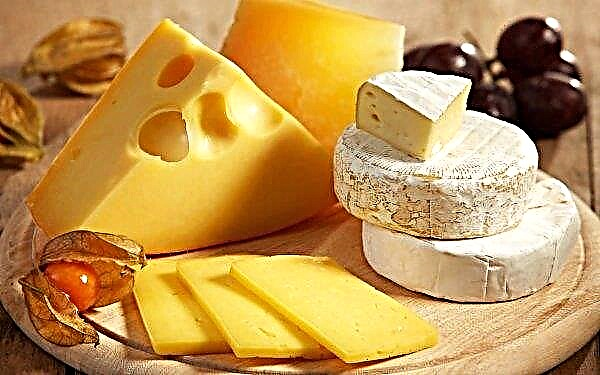Many table varieties of potatoes allow you to choose the taste that you prefer. Among the delicious potato varieties, a special place is occupied by the Colombo variety (Colomba), which will be discussed.
Description and characteristic
This variety was first bred in the Netherlands by careful selection and combination of two Dutch potato varieties. In our latitudes, Colombo became popular due to its early maturation and high palatability.
A month and a half after the emergence of seedlings, it is already possible to harvest the first crop. For example, if the planting was in the last days of May, then by mid-July potatoes will already be on your table.Did you know? Potato is a very poisonous plant, if you do not know how to cook it. Two raw tubers are enough to get serious poisoning.
The tubers are oval and yellow flesh. The size of the potatoes is medium and large, the peel is light yellow, thin and smooth. The mass of one tuber is 90–125 g; up to 15 pieces can be collected from one nest.

The first yield (on the 45th day) is from 100 to 300 centners per hectare. The second yield (55th day of seedlings) is already 240-360 centners per hectare. The maximum yield mark is 420 centners per hectare. By these indicators Colombo variety is many times superior to such popular varieties as Goryanka and Dolphin.
The described variety is table, with good taste and low friability when cooking. Starch in tubers is only 10-15%.
Pros and cons of the variety

- The main advantages of the variety include:
- early ripening;
- high and stable productivity;
- pleasant taste;
- minimal friability;
- disease resistance;
- a wide range of regions for cultivation;
- the crop can be removed several times a year;
- high commercial qualities: transportability, long-term storage.
The disadvantages of Colombo include the fact that it is sensitive to an excess of moisture. Therefore, we need a clear watering scheme, which should be followed.
- In addition to excellent taste, the variety has a number of useful properties:
- It removes water and salt from the body.
- When baked, it helps to diet.
- A useful product for hypertensive patients, people suffering from atherosclerosis and heart failure.
- In its raw form, relieves allergic itching and eliminates burn marks.
Did you know? Before potatoes, the most popular vegetable in Russia was turnip, which we find in many Russian folk tales. Then a more productive root crop replaced its historical predecessor: 10 new ones can be harvested from one potato tuber, and only one grows from one turnip seed.
Features of planting and growing potatoes
The Colombo potato variety is unpretentious, but its agricultural technology has its own nuances. Features of growing vegetables will consider the points.
Landing time
This variety is intended for open ground, so the tubers are buried in May, when the ground has already warmed up. Potatoes can rot from cold soil.
Crop rotation rules
Important factors for planting potatoes are the structure of the soil, its saturation with nutrients and moisture. If it is possible to plant a vegetable on prepared soil, then the best soil is suitable for cereals and legumes, as well as perennial grasses, because after these plants the soil is saturated with organic substances.
So that weeds do not pull mineral substances from the soil and do not interfere with the growth of Colombo, green manure crops are planted with it: lupine, mustard. These plants also help protect the shoots from pests.
What should be the land
The soil should consist of loam or chernozem, the acidity level is weak (pH not higher than 6.0).
The earth needs to be loosened periodically to provide oxygen access to the roots. When choosing a field for planting Colombo, it is very important to avoid close proximity to decorative flower beds, tomato and tobacco fields, since these objects are the suppliers of harmful insects and diseases.Important! Potatoes should not be planted near groundwater - this variety does not tolerate dampness.
Preparing planting material
Before planting tubers in open ground, they must be checked and discarded unsuitable specimens: deformed, diseased or rotten. The optimal weight of the planting tuber is at least 50 g. If all the planting material is large, it can be cut in half. Three sprouts should be obtained from each half.
Potatoes are treated with special antifungal compounds and growth stimulants. Some farmers advise you to process the soil before planting, but it still depends on your desire.
Landing and Hilling Technology
Planting pattern 35 × 60 cm, which means 60 cm between rows and 35 cm between tuber plantings. The depth is 10–15 cm. Thus, about 400 potato tubers are needed per 100 m². Humus mixed with wood ash is placed at the bottom of each well.
At forums, experienced farmers are advised to spud Colombo as early as possible in order to simultaneously weed and loosen the soil. Once the seedlings have reached 15 cm, you can start. It is also a good way to save tender sprouts from frosts that sometimes come back in late May. For our variety, hilling is an important procedure, and is necessary at least once every two weeks.
The procedure is best done in the evening or in the morning. If it rained, then this is the ideal time for hilling: the earth does not crumble, the growth of new underground shoots is stimulated, which contributes to a high yield.Important! If you notice that the bushes do not keep their shape, they grow in width, and not along the ridge, and the tubers stick out of the ground, then it is necessary to carry out additional hilling.
Potato care after planting
Solanaceous culture needs nutritious soil. The planting site is not always ideal for potatoes, so top-dressing mixtures come into play. If under normal conditions you can collect up to three buckets from a planted tuber, then taking into account additional recharge, the ratio becomes 1: 8.

Experts advise not to get involved in feeding Colomb. If you have not planted green manure to potatoes, you can add them as fertilizer. They not only repel harmful insects, but also make the soil more loose and enriched with oxygen, and also suppress weeds. After siderate fertilizer, it is not recommended to undermine the bushes for two months.
Also useful:
- organic fertilizers: ash (normalizes soil acidity), chicken droppings (rich in potassium, calcium, nitrogen and phosphorus);
- mineral: ammonium nitrate, superphosphate;
- organic-mineral: giant (organic fertilizer enriched with useful micro and macro elements).
It is necessary to spray potatoes from pests and fungal diseases. When the potato field is left alone, it must be treated with insecticidal, fungicidal and herbicidal preparations.Important! Chicken manure is a very concentrated fertilizer, its excess threatens the burning of plants.
Top dressing must be done before planting (1.5 months or even in the fall), during the growing season, and also after harvesting.
Watering is needed moderate, it all depends on weather conditions and the region of cultivation. Frequent rains help to reduce additional watering. Too much moisture causes the tubers to rot.
Mulching the soil and regular weeding is important if you rarely spruce bushes. If hilling is regular, then these procedures are minimized or not needed at all.
Grade Diseases and Pests
The variety in question is unique in its resistance to scab, potato cancer and nematode.
A dangerous disease that can affect tubers and leaves is late blight. It is provoked by fungi in the soil. From one diseased plant, a whole bed can suffer during the week. The best control measure is prevention (carefully choose planting tubers, process the planting).
Damage by pests (for example, a Colorado potato beetle or wireworm) occurs with improper care. Seedlings should be checked periodically and sprayed.
Harvesting and storage
Harvesting is best with green tops, when the peel is still thin and the taste is already bright.
The variety is distinguished by high yield indicators: from one hectare you can collect over 40 tons of product. This is one of the most productive varieties of potatoes growing in our latitudes.Did you know? The most expensive variety of potatoes is grown on the island of Noirmoutier and it is called La Bonnot. For a kilogram of vegetable you will need to pay 500 euros, and then enjoy the delicate and delicate taste.
Colombo's marketability is extremely high. Potatoes are well transported and can be stored in a cool room for up to six months without loss of taste or appearance. Moreover, if the temperature regime is observed within +1 ... + 3 ° С, the tubers will not germinate.
Growing potatoes of any kind is a laborious and responsible task. Colombo is a relatively unpretentious variety that does not require multiple care measures and frequent watering. However, this variety is very demanding on planting conditions, so the main stage is the preparation of the soil and planting material.

